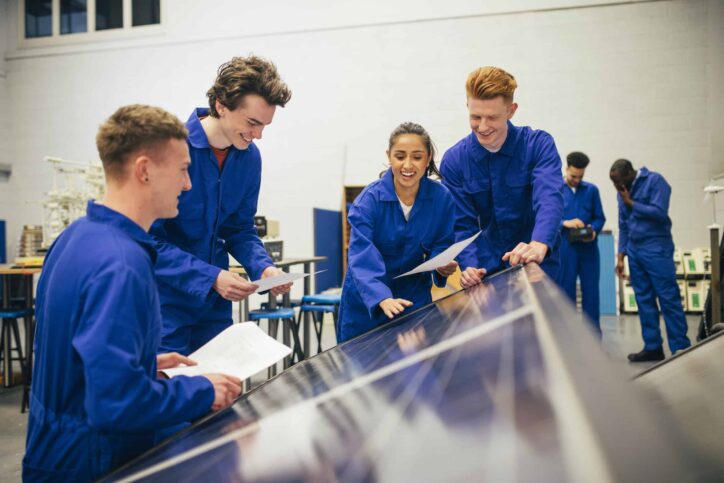There is cause for both excitement and caution as WA positions itself to maximise benefits from its rising production of battery minerals, a major new CCI report says.
The mammoth 220-page study, WA’s Future in the Lithium Battery Value Chain, was produced in partnership with CME, Synergy, BHP, City of Kwinana and Neometals and is likely to become the definitive source for credible information on WA’s battery minerals market.
It found that growth in the sector was most likely to come from the state’s highly-regarded exports of upgraded battery mineral products driven by “global megatrends”.
Demand for personal and portable electronic devices, energy storage systems and electric vehicles was expected to result in orders of magnitude increases in demand for minerals used in the manufacture of lithium-ion batteries, it said.
“As an established and expanding producer of some of these minerals for the global lithium-ion battery supply chain, Western Australia stands to benefit from these megatrends.”
Already a dominant force in the export of lithium spodumene concentrates, WA had an exciting opportunity to grow into new value-added sectors such as lithium hydroxide and other cathode-ready chemicals.
While there had been plenty of talk about the potential for WA to eventually produce battery components, the report struck a more cautious note.
“The Australian domestic market for battery product applications will grow, but we will remain a relatively small market for most lithium-ion battery product applications by global standards due to our population and industry limitations.
“Accordingly, Western Australia’s competitive advantage, and therefore participation in the lithium-ion battery supply chain, will very likely remain export oriented.”
CCI Chief Executive Chris Rodwell said WA was “extraordinarily well positioned” to benefit from the opportunities in the battery manufacturing supply chain via its emerging production of high-purity battery chemicals.
“But we must play to our strengths to maximise the benefit to WA in this hotly contested global market,” he told 200 guests at the report launch.
“When we look further down the value chain, particularly into the mid-stream and downstream, what we find is extraordinary competition, especially against Asian jurisdictions.”
CME Chief Executive Paul Everingham said WA was poised to capitalise on opportunities for lithium hydroxide and nickel sulphate production, and potentially cobalt sulphate production.
Achieving cathode-ready chemical production could enhance the state’s lithium royalties to the extent that “within five years it would make lithium-related minerals the second-biggest payer of royalties after iron ore, and leap-frogging gold”, he told the launch function.
But going beyond cathode chemicals into battery components would probably involve a “difficult” discussion.
“My sense is it would be extremely expensive and would have to be significantly subsidised by the Commonwealth Government, probably to the tune of billions of dollars,” he said.
The report, meanwhile, said planned and proposed investments in downstream processing, including those by Tianqi and BHP at Kwinana and Albemarle at Kemerton, were underpinned by findings that lithium-ion battery technology was “very likely to remain the platform technology for most rechargeable battery applications for the foreseeable future”.
“The emerging dominance of nickel-manganese-cobalt (NMC) cathode chemistry in electric vehicles favours Western Australia’s existing battery minerals production base,” it said.
The report also hailed the potential for local production and export of cathode precursor materials for batteries manufactured in Asia.
“While technically complex and requiring discrete supply chain relationships, the ability to
leverage from existing reagent suites and operations means it is not an insurmountable step in process to convert domestically manufactured technical grade chemicals into some specific battery grade compounds in Western Australia.”
The report calls on the State Government to conduct further analysis and modelling to determine if there is an economic case for using the royalty regime to incentivise investment in WA battery chemical precursor production capacity.
Treasurer Ben Wyatt said the report would complement the State Government’s strategy around lithium and energy metals, due to be released shortly.
“Having an industry-led view expressed is fundamentally important, so ultimately you are only going to get the success that we are wanting to achieve when you have collaboration between governments and industry around how we work together to maximise the value that we get from lithium and other energy minerals.”






